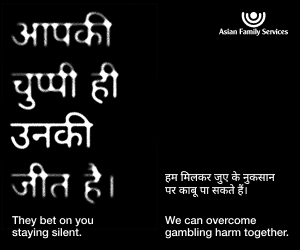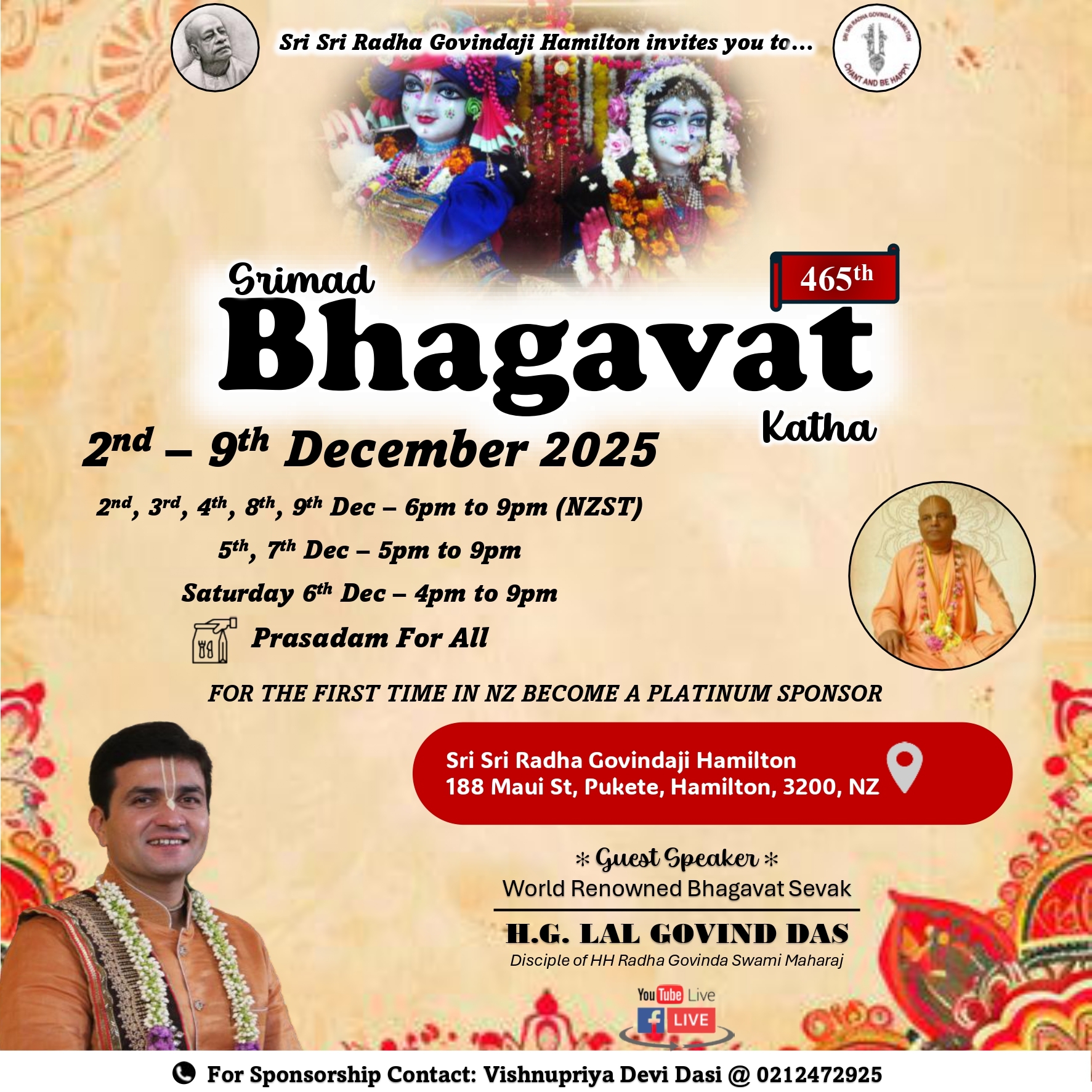Three things that Kiwi-Indian community should look forward to in 2020

Every year begins with it fresh hopes and aspirations, and it is no different for a community than for an individual. The Kiwi-Indian community that has been living in the country for at least more than a hundred-odd years and has become an essential part of the multi-ethnic social fabric of this country, is also likely to have some aspirations and hope for 2020.
In that regard, centenary celebrations of the venerable Auckland Indian Association, the grand opening of the multisport complex at Takanini Gurudwara and the new electorate of Flat Bush in South Auckland, are likely to be the three big things of significant interest for the community, apart from the standard issues such as immigration, safety and law & order, culture & festivals, and of course, general elections that continues to attract much public attention.
Centenary celebrations of Auckland Indian Association: Why it matters
On Sunday, January 26, Auckland Indian Association was to lead a celebratory community event of India’s Republic Day where a senior Indian Minister was expected to attend along with the High Commissioner and the Hon Consul of India.
While the Minister’s visit has been cancelled due to “unforeseen circumstances,” the focus continues to remain on the Auckland Indian Association as it enters into 100th year of its existence. This year many such events are being planned by the Association with support of the offices of the Indian High Commission and the Consulate of India.

Completion of hundred years of continued existence is no mean achievement in itself for any organisation, leave aside for a community association, as it takes an exceptional clarity of vision and purpose to remain relevant decade after decade.
For community organisations, it becomes even more challenging to endure the vagaries of time and societal challenges, as their offerings to their core members of the community are rather intangible.
Without being critical or disrespectful toward anyone, appreciating the hundred years of a community organisation might be more challenging for the current wave of new immigrants who have arrived in the country riding on much favourable immigration policies and also fortunately aided with the modern advancements of communication technologies.
This year will give ample opportunities to the Kiwi-Indian community to reflect upon the history, struggles, trials and tribulations of our earliest settlers in this beautiful country.
Auckland Indian Association was formed in 1920 by the founding members of the community who have arrived in the country in the early 1900s having travelled from India by sea to create a new life in this beautiful country.
During that time, the primary goal of any ethnic community organisation was not merely to celebrate the culture, festivals, and the diversity, but rather to fight racism, bigotry and prejudice that was galore in the then kiwi-public life.
Enduring those initial attitudinally-adverse years is something that should be celebrated and appreciated by one and all in the community.
To give a better perspective and sharing the accolades with many other community organisations with a similar level of antiquity, Wellington Indian Association (1925), a country section, which eventually came together in 1926 to form New Zealand Indian Central Association.
All these organisations are forbears of our community and have worked incessantly during those early years to promote and preserve Indian culture and progressively develop an attitudinal change of mutual respect and equality for the Kiwi-Indian community in New Zealand.
In that regard, this year will give the Kiwi-Indian community ample opportunity to not only celebrate centenary celebrations of Auckland Indian Association but also celebrate the struggles of our earliest settlers.
Takanini Gurudwara’s multi-sports centre: A gift to community
On 22nd March 2020, the Supreme Sikh Society of New Zealand will be hosting a grand community event for the inauguration of the much awaited and hugely appreciated multi-million dollar multi-sports complex in South Auckland’s Takanini Gurudwara.

For uninitiated, the Supreme Sikh Society has been working arduously for many years to build a multi-sports complex ($6.5million) with a grand vision of creating a healthy, vibrant and mutually inclusive society in the neighbourhood of the multi-ethnic South Auckland suburbs.
A total of seven different sports’ turfs including for soccer, hockey, athletics track, volleyball, basketball, cricket and kabaddi – the famous contact-team-game from India – have almost been completed and waiting for inauguration after being vetted by the highest professional regulatory bodies of each sport in the country.
The soccer pitch is fully approved by FIFA [the highest international governing body for football]. Similarly, the turfs and pitches for other games have also been constructed under the strict guidelines of respective sporting authorities to ensure that facilities comply with the highest levels of professional standards.
The Supreme Sikh Society has been working in close coordination with all key stakeholders including Manurewa, Takanini & Papakura Community Boards and local Councillors for this mega project.
The Governance Body of the Sports Complex, which is to be announced soon, is likely to consist of members from Local Community Board and the representatives of the CLM Sports Auckland.
In an earlier coverage of the upcoming sports complex by the Indian Weekender, Supreme Sikh Society’s spokesperson Daljit Singh said, “This [multi-sports centre] has been a long-held dream since last 10-15 years when the Supreme Sikh Society first got the land in South Auckland.”
“We have been clear from the very beginning of this Gurudwara that we need to come up with a major sports facility to not only promote sports and good health among our youths from the wider Kiwi-Indian community.”
“But also because sports is a great unifier of people helping in cutting our cultural differences,” Mr Singh then said.
Completion of such a mega sporting facility and dedicating to the wider communities is indeed a moment of pride, not only for the entire Kiwi-Indian community, but the wider South Auckland communities.
New proposed electorate of Flat Bush: Does it hold any promise for community?
There has been much public interest over the proposed changes in the electorate boundaries and the prospects of creation of a new electorate in South Auckland with the name of Flat Bush.

Late last year in November 2019, the Representation Commission had released a report on the proposed boundaries and names of electorates for the next two general elections, whereby suggesting creation of a new electorate with the name of Flat Bush and that will be comprising of parts of the existing Hunua, Manurewa and Papakura electorates and includes Wattle Downs and Takanini.
The final decision about the boundaries and the new electorate will be made in April 2020 following a consultation and public feedback process from December to February this year.
Notably, the total number of electorates in Auckland will increase from 24 to 25, and the total number of electorates in the country will increase from the current 71 to 72. The total number of seats for the parliament is going to remain the same at 120, thereby reducing the number of List MPs that can go to parliament from current 49 to 48.
Political parties and political observers have already an exalted level of interest in the prospects of this new electorate of Flat Bush, as it can rightly prove decisive in the formation of the next government after elections due later in 2020.
Many political observers have opined that potentially National could take that new electorate of Flat Bush after next elections; however, both National and Labour Party are tight-lipped and refusing to jump the gun yet.
Meanwhile, from the Kiwi-Indian community’s perspective, there is some underlying interest in the fact, if there could be a possibility of getting the first-ever Kiwi-Indian electorate MP elected from the Flat Bush electorate.
Under New Zealand’s Mixed Member Proportional System, so far all ethnic MPs, in general, have relied on getting selected from Party Lists to enter into the parliament rather being able to win elections. This is despite on many occasions, several ethnic MPs being able to win a respectable number of votes.
However, this can potentially change in 2020, with the Flat Bush electorate, which has a significant population of ethnic Indian and Chinese population, if the major parties choose to tap those underlying aspirations within those communities to have an electorate MP.
While, there is no denial of the fact that the MMP system is complex, and the best possible chance for securing representation for ethnic communities in the parliament, there are some underlying aspirations within the Kiwi-Indian community to have an electorate Kiwi-Indian MP in the parliament.
If that has to happen anytime soon, then possibly, Flat Bush electorate would present a good chance, as the Kiwi-Indian community represents 21 per cent of total voters in the electorate.
According to Statistics NZ, there are 15,720 usual residents in the 2018 Census, who identify themselves as of Indian ethnicity in Flat Bush ‘proposed’ electorate. Notably, this count is for those who identified themselves as ‘Indian ethnicity’. This means that a person might have identified themselves as ‘Indian ethnicity’ only OR as ‘Indian ethnicity and other ethnicities’. The total population of Flat Bush electorate is 74,550.
Against such a backdrop, it would be interesting to note if there has been some interest within our co-ethnic aspirants and an equal interest within major political parties to cultivate those interests and tap on underlying aspirations of the community.
For now, both National and Labour Party have sidestepped these questions, however, this would be an interesting space to watch in the coming months.
Every year begins with it fresh hopes and aspirations, and it is no different for a community than for an individual. The Kiwi-Indian community that has been living in the country for at least more than a hundred-odd years and has become an essential part of the multi-ethnic social fabric of this...
Every year begins with it fresh hopes and aspirations, and it is no different for a community than for an individual. The Kiwi-Indian community that has been living in the country for at least more than a hundred-odd years and has become an essential part of the multi-ethnic social fabric of this country, is also likely to have some aspirations and hope for 2020.
In that regard, centenary celebrations of the venerable Auckland Indian Association, the grand opening of the multisport complex at Takanini Gurudwara and the new electorate of Flat Bush in South Auckland, are likely to be the three big things of significant interest for the community, apart from the standard issues such as immigration, safety and law & order, culture & festivals, and of course, general elections that continues to attract much public attention.
Centenary celebrations of Auckland Indian Association: Why it matters
On Sunday, January 26, Auckland Indian Association was to lead a celebratory community event of India’s Republic Day where a senior Indian Minister was expected to attend along with the High Commissioner and the Hon Consul of India.
While the Minister’s visit has been cancelled due to “unforeseen circumstances,” the focus continues to remain on the Auckland Indian Association as it enters into 100th year of its existence. This year many such events are being planned by the Association with support of the offices of the Indian High Commission and the Consulate of India.

Completion of hundred years of continued existence is no mean achievement in itself for any organisation, leave aside for a community association, as it takes an exceptional clarity of vision and purpose to remain relevant decade after decade.
For community organisations, it becomes even more challenging to endure the vagaries of time and societal challenges, as their offerings to their core members of the community are rather intangible.
Without being critical or disrespectful toward anyone, appreciating the hundred years of a community organisation might be more challenging for the current wave of new immigrants who have arrived in the country riding on much favourable immigration policies and also fortunately aided with the modern advancements of communication technologies.
This year will give ample opportunities to the Kiwi-Indian community to reflect upon the history, struggles, trials and tribulations of our earliest settlers in this beautiful country.
Auckland Indian Association was formed in 1920 by the founding members of the community who have arrived in the country in the early 1900s having travelled from India by sea to create a new life in this beautiful country.
During that time, the primary goal of any ethnic community organisation was not merely to celebrate the culture, festivals, and the diversity, but rather to fight racism, bigotry and prejudice that was galore in the then kiwi-public life.
Enduring those initial attitudinally-adverse years is something that should be celebrated and appreciated by one and all in the community.
To give a better perspective and sharing the accolades with many other community organisations with a similar level of antiquity, Wellington Indian Association (1925), a country section, which eventually came together in 1926 to form New Zealand Indian Central Association.
All these organisations are forbears of our community and have worked incessantly during those early years to promote and preserve Indian culture and progressively develop an attitudinal change of mutual respect and equality for the Kiwi-Indian community in New Zealand.
In that regard, this year will give the Kiwi-Indian community ample opportunity to not only celebrate centenary celebrations of Auckland Indian Association but also celebrate the struggles of our earliest settlers.
Takanini Gurudwara’s multi-sports centre: A gift to community
On 22nd March 2020, the Supreme Sikh Society of New Zealand will be hosting a grand community event for the inauguration of the much awaited and hugely appreciated multi-million dollar multi-sports complex in South Auckland’s Takanini Gurudwara.

For uninitiated, the Supreme Sikh Society has been working arduously for many years to build a multi-sports complex ($6.5million) with a grand vision of creating a healthy, vibrant and mutually inclusive society in the neighbourhood of the multi-ethnic South Auckland suburbs.
A total of seven different sports’ turfs including for soccer, hockey, athletics track, volleyball, basketball, cricket and kabaddi – the famous contact-team-game from India – have almost been completed and waiting for inauguration after being vetted by the highest professional regulatory bodies of each sport in the country.
The soccer pitch is fully approved by FIFA [the highest international governing body for football]. Similarly, the turfs and pitches for other games have also been constructed under the strict guidelines of respective sporting authorities to ensure that facilities comply with the highest levels of professional standards.
The Supreme Sikh Society has been working in close coordination with all key stakeholders including Manurewa, Takanini & Papakura Community Boards and local Councillors for this mega project.
The Governance Body of the Sports Complex, which is to be announced soon, is likely to consist of members from Local Community Board and the representatives of the CLM Sports Auckland.
In an earlier coverage of the upcoming sports complex by the Indian Weekender, Supreme Sikh Society’s spokesperson Daljit Singh said, “This [multi-sports centre] has been a long-held dream since last 10-15 years when the Supreme Sikh Society first got the land in South Auckland.”
“We have been clear from the very beginning of this Gurudwara that we need to come up with a major sports facility to not only promote sports and good health among our youths from the wider Kiwi-Indian community.”
“But also because sports is a great unifier of people helping in cutting our cultural differences,” Mr Singh then said.
Completion of such a mega sporting facility and dedicating to the wider communities is indeed a moment of pride, not only for the entire Kiwi-Indian community, but the wider South Auckland communities.
New proposed electorate of Flat Bush: Does it hold any promise for community?
There has been much public interest over the proposed changes in the electorate boundaries and the prospects of creation of a new electorate in South Auckland with the name of Flat Bush.

Late last year in November 2019, the Representation Commission had released a report on the proposed boundaries and names of electorates for the next two general elections, whereby suggesting creation of a new electorate with the name of Flat Bush and that will be comprising of parts of the existing Hunua, Manurewa and Papakura electorates and includes Wattle Downs and Takanini.
The final decision about the boundaries and the new electorate will be made in April 2020 following a consultation and public feedback process from December to February this year.
Notably, the total number of electorates in Auckland will increase from 24 to 25, and the total number of electorates in the country will increase from the current 71 to 72. The total number of seats for the parliament is going to remain the same at 120, thereby reducing the number of List MPs that can go to parliament from current 49 to 48.
Political parties and political observers have already an exalted level of interest in the prospects of this new electorate of Flat Bush, as it can rightly prove decisive in the formation of the next government after elections due later in 2020.
Many political observers have opined that potentially National could take that new electorate of Flat Bush after next elections; however, both National and Labour Party are tight-lipped and refusing to jump the gun yet.
Meanwhile, from the Kiwi-Indian community’s perspective, there is some underlying interest in the fact, if there could be a possibility of getting the first-ever Kiwi-Indian electorate MP elected from the Flat Bush electorate.
Under New Zealand’s Mixed Member Proportional System, so far all ethnic MPs, in general, have relied on getting selected from Party Lists to enter into the parliament rather being able to win elections. This is despite on many occasions, several ethnic MPs being able to win a respectable number of votes.
However, this can potentially change in 2020, with the Flat Bush electorate, which has a significant population of ethnic Indian and Chinese population, if the major parties choose to tap those underlying aspirations within those communities to have an electorate MP.
While, there is no denial of the fact that the MMP system is complex, and the best possible chance for securing representation for ethnic communities in the parliament, there are some underlying aspirations within the Kiwi-Indian community to have an electorate Kiwi-Indian MP in the parliament.
If that has to happen anytime soon, then possibly, Flat Bush electorate would present a good chance, as the Kiwi-Indian community represents 21 per cent of total voters in the electorate.
According to Statistics NZ, there are 15,720 usual residents in the 2018 Census, who identify themselves as of Indian ethnicity in Flat Bush ‘proposed’ electorate. Notably, this count is for those who identified themselves as ‘Indian ethnicity’. This means that a person might have identified themselves as ‘Indian ethnicity’ only OR as ‘Indian ethnicity and other ethnicities’. The total population of Flat Bush electorate is 74,550.
Against such a backdrop, it would be interesting to note if there has been some interest within our co-ethnic aspirants and an equal interest within major political parties to cultivate those interests and tap on underlying aspirations of the community.
For now, both National and Labour Party have sidestepped these questions, however, this would be an interesting space to watch in the coming months.









Leave a Comment